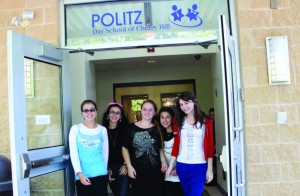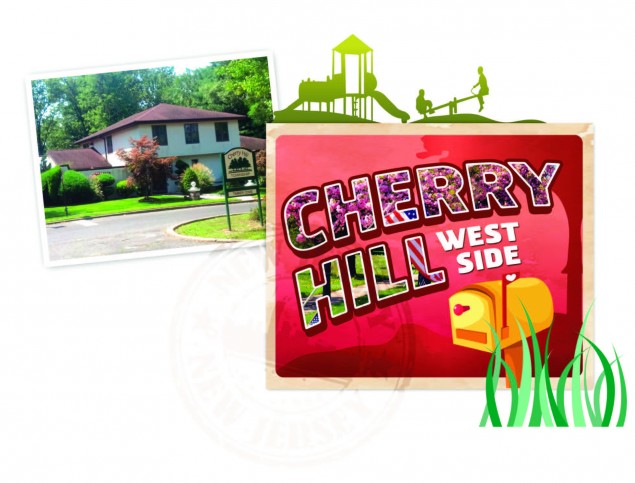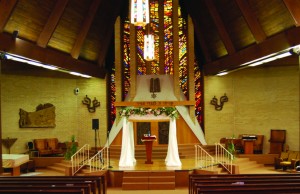Who says you can’t live the out-of-town life without moving from the New York- metropolitan area? What if you could actually afford your dream home and your children’s tuition and live in an established frum community that is a mere hour-and-a-half from Manhattan?
Apparently, you can.
“I don’t know how much longer we are going to remain the best-kept secret on the East Coast,” says Daniel Drabkin, thirty-six, president of the Young Israel of Cherry Hill. According to Drabkin, on Cherry Hill’s west side, one can buy a beautiful four-bedroom home for $200,000, easily commute to a job in the five boroughs, Philadelphia or Baltimore and come home to a community where everyone knows your name.
Seemingly, the secret is getting out. Over the past decade, more and more young families have been moving to the west side of Cherry Hill. (See the article on Cherry Hill’s east side.) “I like living in a small community; it’s friendly and so much easier to get around,” says Rachel Pichette, thirty, who moved from the Philadelphia area in order to afford to buy a home. “Congregation Sons of Israel, which also houses the day school and mikvah, is just a few blocks away.” She also stresses the value of feeling like an integral part of the community. “We felt included right away,” says Pichette, whose husband is gabbai of the shul. “They kept putting us on different committees; we feel very important here.”
Rabbi Ephraim Epstein, senior rabbi of Congregation Sons of Israel, a Modern Orthodox shul, concurs. “In the average large community, you don’t even know who is involved with the mikvah, eruv or chevra kadisha,” he says. “In smaller communities, those are the people sitting in the same row as you in shul. The geographical advantage, the affordability and the . . . [ability] to make a difference—that just might be the recipe that makes the community so attractive. [By moving here,] one is moving to a place that’s looking for people to roll up their sleeves and share their talents and help grow Torah.” He reports that over sixty families have moved to the west side of Cherry Hill over the past ten years.
Cherry Hillers on the west side also pride themselves on their diversity. Transplants come from across the American and religious map—from Teaneck, Brooklyn, Baltimore, Texas and Los Angeles. “We have ‘black hatters,’ Conservadox, those who are frum-from-birth and ba’alei teshuvah,” says Alise Panitch, an attorney living on Cherry Hill’s west side for over two decades. “It’s a place where everyone feels comfortable, welcomed and encouraged to grow and to become part of the community. We absolutely love it here.”
Panitch helped establish the community’s Orthodox base. In the 1990s, the area’s Orthodox residents were mostly students training at the numerous medical schools in the area (local medical schools include Perelman School of Medicine at the University of Pennsylvania, Penn State College of Medicine and Jefferson Medical College, among others), as well as in other professional fields. With the aim of turning these transient members into long-term residents, she chaired the capital campaign to expand Politz Day School of Cherry Hill, the community’s local Modern Orthodox school. “One of the critical issues was education,” she says. “The Jewish day school only went up to third grade; the young couples weren’t buying homes and staying.” As hoped, the expansion triggered a turning point in the community’s growth. The school now boasts 160 students, and the number is steadily rising. Other schools in the area include Politz Hebrew Academy in Philadelphia and Foxman Torah Institute, a high school for boys, in Cherry Hill.
As the frum population increases, so does its need for adult education. “To me, more classes means more growth,” says Vivien Richmond, an enthusiastic participant in the shiurim offered by the Cherry Hill Community Kollel.
And sometimes, east meets west. Rabbi Epstein, along with Rabbi Mendy Mangel of Chabad Lubavitch of Camden and Burlington Counties and Rabbi Yisroel Tzvi Serebrowski of the Torah Links Center of Cherry Hill, both rabbis on the east side, are part of the area’s vaad harabbanim. Composed of more than a minyan of rabbis, the vaad was initiated by Rabbi Mangel. “We all get along beautifully,” says Rabbi Serebrowski. “We sit across the table to discuss the communities’ common concerns—as rabbanim and chaveirim.”
Blame it on the OU
So how are people finding out about this formerly well-kept secret? Panitch considers the OU Emerging Communities Fair the “strongest vehicle” for getting the word out about Cherry Hill’s west side. “It’s proven to be an exceptional way to connect with families looking to move,” she says. “There are some who attended and moved in within two months.”
Aaron Spector, who has been in the community for eight years, brought members of Congregation Sons of Israel’s softball team to the fair. His wife, Sabrina, boasts about the advantages of living in the community. “My friends in North Jersey could buy two houses in Cherry Hill for what they paid for one,” she says. “And our tuition is one of the lowest in the area. [Because it’s a small community,] the kids get the one-on-one attention they need at school.”

Politz Day School of Cherry Hill is the community’s Modern Orthodox school. Photos courtesy of Alise Panitch
Ironically, the more the community sings of its small-town benefits, the larger it grows. Will it ever lose its out-of-town feel?
Drabkin says, “When we become the size of Brooklyn, I’ll worry about it. Until then, I think we’re good.”
Bayla Sheva Brenner is senior writer in the OU Communications and Marketing Department.

